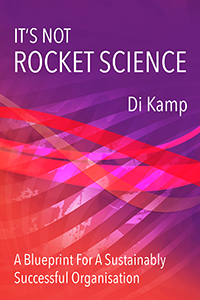I was running a conference recently, where I asked people to work in small groups, and then present back to the whole group. No doubt you have used this methodology. I knew there was a danger that the managers involved in the groups would be the ones who presented their group findings, and I wanted to avoid that. Yet I didn’t want to put anyone on the spot.
So I told a story about seeing Richard Branson give a talk. It was at the end of a long day, where everyone had given slick presentations, and we were all a bit mind-boggled.
He came on, and was clearly nervous. His speech was hesitant and his stammer showed through. Yet he held us spellbound. The reason? His talk was heartfelt, rather than clever, and he obviously cared about his subject deeply.
I then suggested to the groups that the person who fed back to the whole group was someone who cared deeply about what they had come up with, and that it didn’t matter how long or slick the presentation was, it only mattered that it was heartfelt.
Although I had set it up, I was astounded by the level of presentation that we had. People who had never spoken in public before were daring to speak, and the genuine involvement just shone through. We actually went past lunch time without realising it, because they were so good!
We often try to encourage people to risk stretching themselves, and there are many ways of ding it. The use of a story is just one of them. But I thought it was worth sharing, to prompt you to think about how you can encourage people, and give them the confidence to go beyond their assumed limitations.
Homework
- What stories could you tell to encourage people to have a go when they might otherwise not dare?
- How else can you give people confidence, so they feel safe in having a go?



